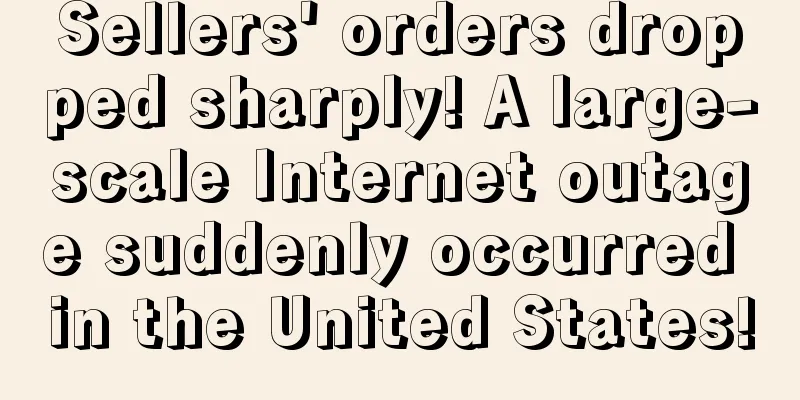Seller Guide: How to Create an Amazon FBA Shipment

|
FBA is a logistics and warehousing service launched by Amazon. In addition to making it more convenient for sellers to handle logistics, it is also a key factor in becoming a Prime product and winning the Buy Box. Amazon FBA has completely changed the logistics model of sellers in the past few years. Although using FBA services has a price and requires payment, it allows sellers to get rid of the complicated logistics work, eliminating the need to pack products, handle delivery and returns, and focus more on developing their business. Amazon currently has FBA warehouses in various places, which can seamlessly meet consumers' delivery requirements. If you are an Amazon seller and want to know how to ship goods to FBA warehouses, this article can answer your questions. The process of shipping to an Amazon FBA warehouse is not complicated, but it does take some time. Some categories may also require special handling. In order to properly handle products and ensure product safety and employee safety, Amazon FBA warehouses implement strict regulations. As an Amazon seller, you must abide by the rules and regulations set by Amazon, otherwise you will face the risk of being punished. 01 Amazon FBA Fees Sellers need to have a clear understanding of Amazon FBA fees, which include: Fulfillment Fees – per unit
Monthly Storage Fee - Per Cubic Foot
As you can see from the table above, Amazon FBA fees depend on:
The fulfillment fee is charged per piece, and the fee varies depending on the product type, weight and size. The monthly storage fee is calculated based on the actual space occupied by the seller's products. So you need to look at the storage costs based on product type to better plan your inventory.
02 7 Steps to Shipping to FBA After understanding the FBA fees, let’s move on to the topic of this article, the 7 steps of shipping to FBA: 1. Create a shipping plan The first step to shipping products to an FBA warehouse is to create a shipping plan. Creating a shipping plan helps sellers determine:
If you are a private label seller, you need to create a listing for your product before you can make a shipping plan. To create a listing and shipping plan, log in to the seller backend and follow the steps below:
After completing the above steps, you now need to verify the shipping address, which can be the supplier address, company address or home address. After completing the address verification, you need to confirm the packaging type, which can be bulk, boxed, original packaging, etc. After confirming the packaging type, continue with the following steps. 2. Set the delivery quantity After creating a shipping plan, you need to set the quantity of products to be shipped to the Amazon FBA warehouse. During the setup process, pay attention to the following warning notifications sent by Amazon:
Sellers need to comply with Amazon's recommended product preparation requirements in order to quickly send products to FBA. Products that do not meet the requirements will be returned or rejected, or additional fees will be charged, or they may not be shipped to FBA in the future. 3. Prepare the product You need to take appropriate measures to ensure that the products are safely delivered to the FBA warehouse. Final preparation of the products, such as labeling, can be done by Amazon. But before that, you need to ensure that the products are not damaged when they are delivered to the warehouse. Therefore, packaging materials are very important. Amazon FBA also has relevant regulations on packaging materials. Packaging that does not meet the regulations will be rejected. You can use the following packaging materials:
When packaging products in polyethylene bags , be sure to attach barcodes to facilitate Amazon's identification and tracking of products. Sellers can visit the Prepare Products page in the Seller Center to obtain information about product packaging. 4. Product labeling Amazon uses a barcode system to track products sent to its warehouses, so sellers need to label their products according to Amazon's standards. You don't need to choose mixed storage without labeling. Here are a few labeling options:
Note that the barcode must meet FBA requirements. After the settings are completed, you can create the barcode and then click Print. The barcode can be saved as a PDF format and then printed. If there is already a manufacturer to label the product, it will be much easier. Note that the manufacturer's labeling must also comply with Amazon FBA requirements. 5. Conduct an audit Before confirming the shipment, you need to review the shipping plan again. Pay special attention to the warehouse code and shipping code, because your products may be shipped to different FBA warehouses. Amazon will provide you with the shipping name, which can be changed maliciously. Note that any changes may affect the packing list. You can also see the MSKU (Seller Inventory) quantity, which is a unique product identifier that reflects the quantity shipped per MSKU. After all the information is confirmed, the View Shipments page will appear. Review it again before submitting. Then click Work on Shipment to send the product to Amazon FBA. 6. Prepare for transportation Go to the Prepare Shipment page, then:
You can still make some changes, but if there are too many things to change, it is best to delete the plan and create it again. Sellers can choose from the following shipping options:
7. Summary After the shipment is completed, all you have to do is wait for the product to be delivered to the warehouse. You can track the shipment on the Summary page, and there are monitoring tools to help you track it. After the product is delivered to FBA, you can see the status of the delivery. 03 Advantages of FBA There are many benefits to using FBA. Although there are costs, the service provided is very good. For example, Amazon is responsible for returns, and FBA sellers' products can carry the Prime logo, which helps with ranking in search results. The shipping price of FBA is also very competitive. It also helps sellers save a lot of time. They only need to be responsible for sending the goods to FBA. Text ✎ Mary/ Statement: When reprinting this article, the title and original text must not be modified, and the source and original link must be retained. |
<<: How can Amazon sellers increase their average order value?
>>: Research Amazon keywords and avoid these "minefields"
Recommend
Sellers can’t stand it anymore. Amazon coupons are reporting errors again on a large scale
Normal, once there is data abnormality, such as s...
The Los Angeles wildfire has become the fuse for the collective bankruptcy of cross-border sellers
In early 2025, wildfires broke out in Los Angeles...
Amazon lost $2 billion in Q2! It was revealed that it laid off nearly 100,000 employees
▶ Video account attention cross-border navigation ...
What is AMZBase? AMZBase Review
AMZBase is a free and useful tool that helps you s...
What is the U.S. Copyright Office? Review of the U.S. Copyright Office
The United States Copyright Office (USCO) is part ...
Sellers no longer have to worry about being blocked! With this plan, all service providers will lose their jobs!
After the Black Friday promotion, my brother-in-l...
What is Trademarkia? Trademarkia Review
Trademarkia is the largest trademark search engine...
Amazon launches "Amazon Counter" in Canada! Set up a new package pickup point!
<span data-shimo-docs="[[20,"获悉,据外媒报道,近日亚马...
What is Craigslist? Craigslist Review
Craigslist is a large-scale free classified advert...
What is Mulberry? Mulberry Review
Mulberry, also known as Mulberry, is a British lea...
The products on 1688 are highly homogenized. How can sellers develop and operate finished products at low cost?
I believe many sellers will find that when we sear...
What is a DUNS number? DUNS number review
The DUNS number is a nine-digit identifier unique ...
What is Born to Run? Born to Run Review
Amazon's new program, Born to Run, is a progra...
What is Digital Cross-border BI? Digital Cross-border BI Review
It is a free online custom analysis software that ...
What is Trackingmore? Trackingmore Review
Trackingmore is a package tracking platform that i...









